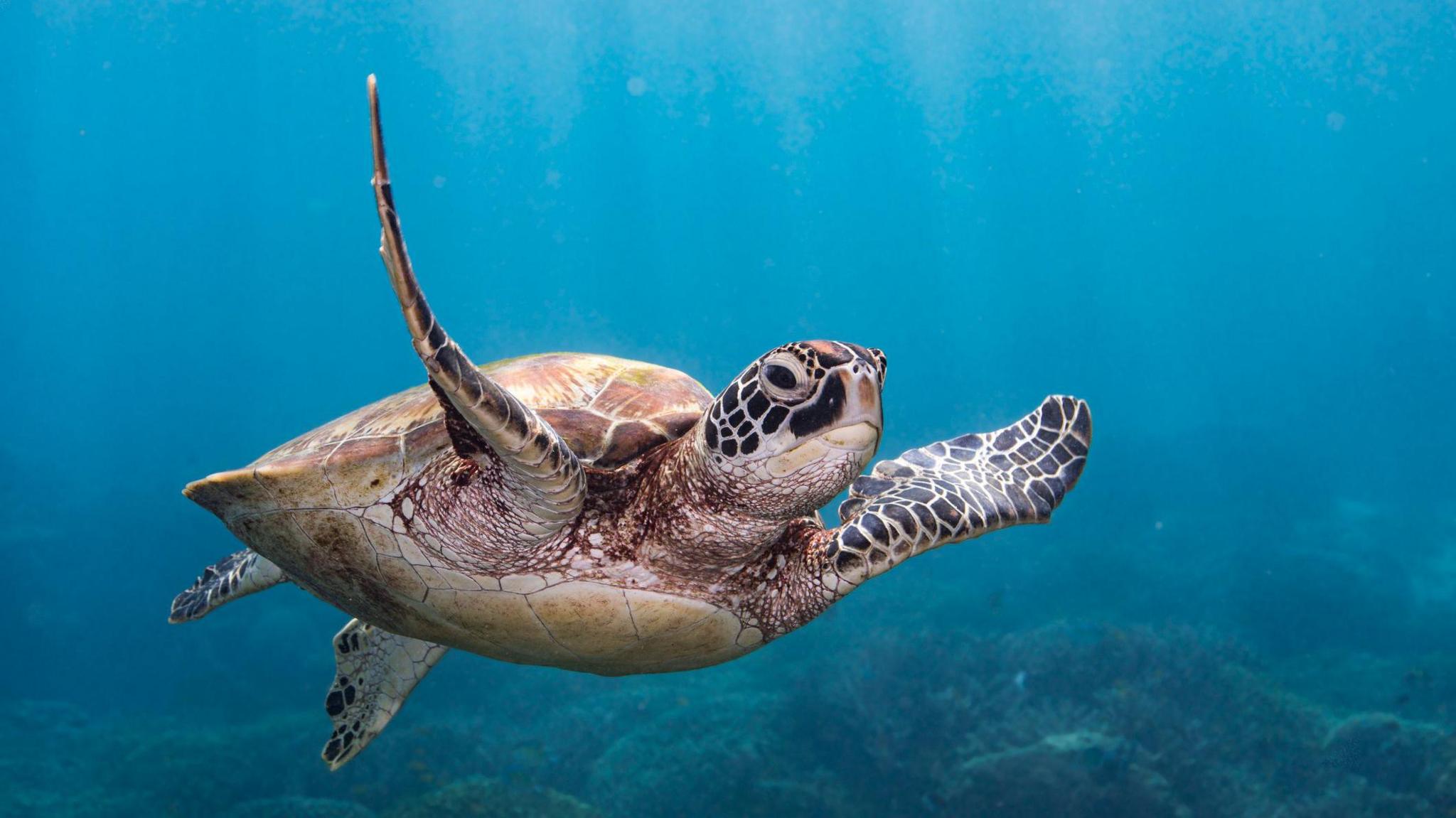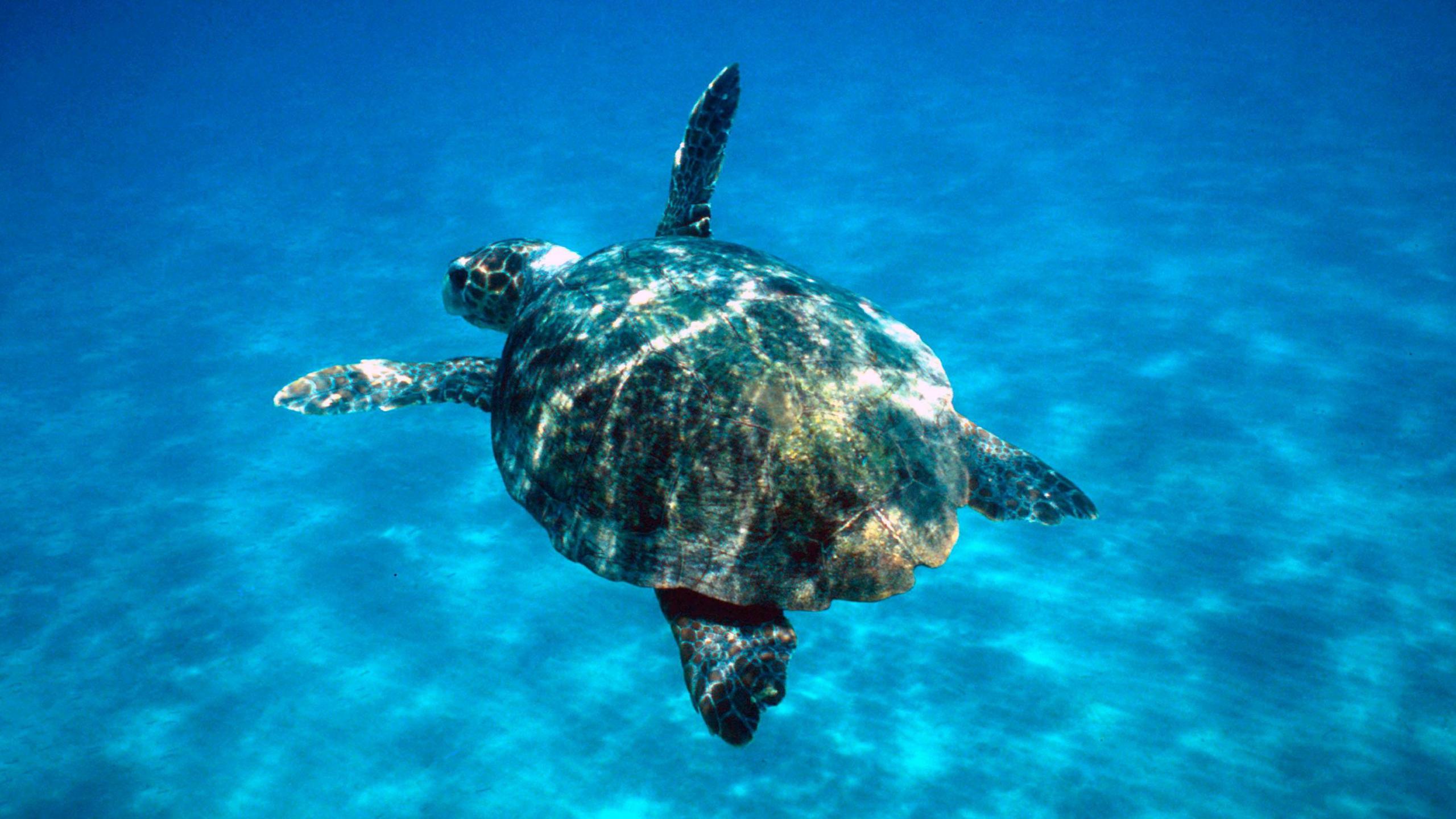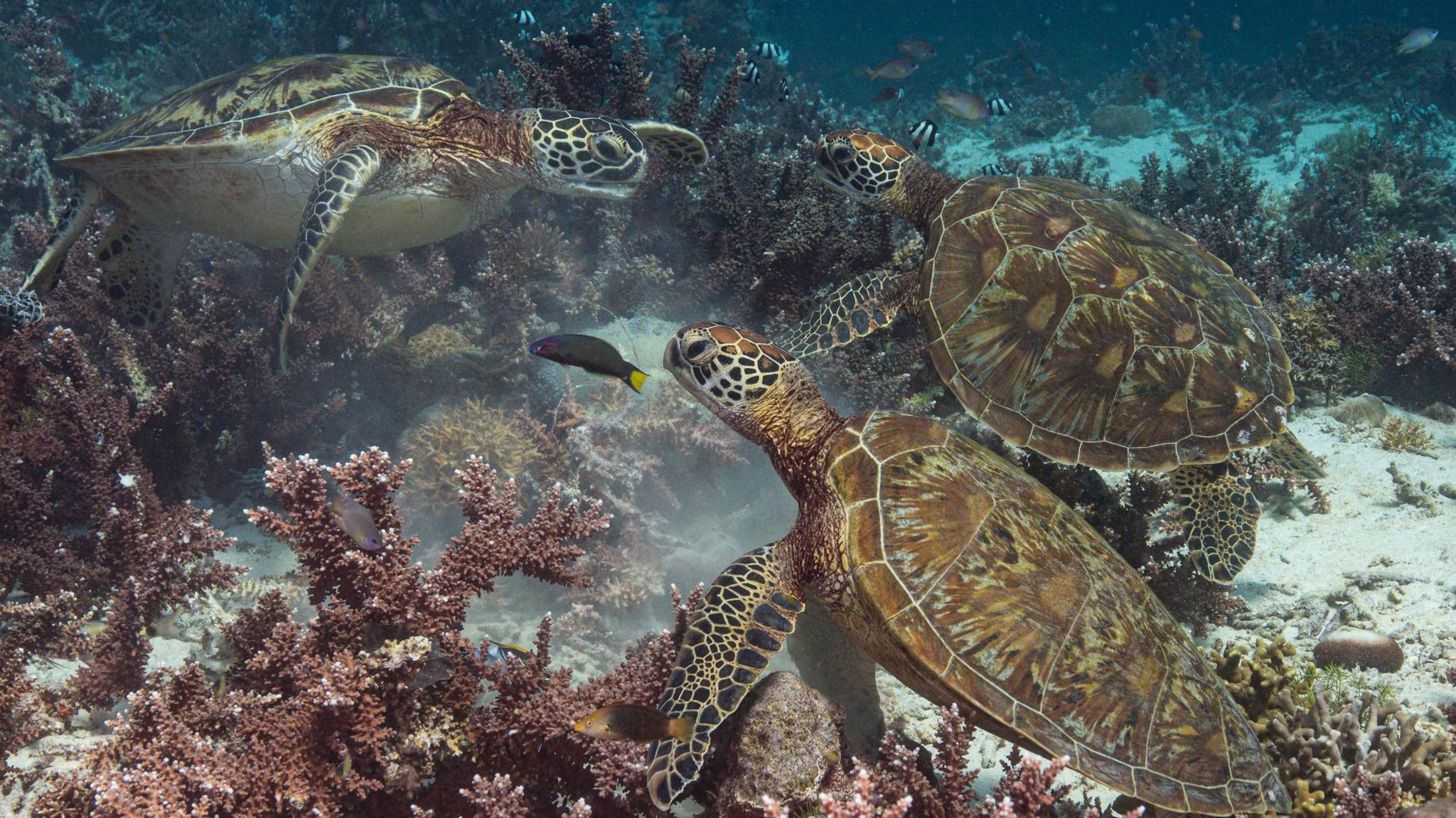Sea turtles 'bouncing back' after help around the world

It's a great start in the right direction for these sea creatures
- Published
Conservationists are celebrating after help being given to sea turtles has led to a boost in the animals' numbers.
Scientists have been looking at the numbers of sea turtles across the world to try and understand how they're affected by humans.
Sea turtles face lots of challenges - from pollution in the sea to rising water temperatures.
However, sea turtle numbers are up where there have been projects to protect them and the places where they live.
But not every species of sea turtle is doing well, and experts say the good work needs to be kept up.
More stories from the animal world:
Meet the injured sea turtle given a third chance at life
- Published17 September 2024
Barnacle Bill the turtle hitches a lift with the Royal Navy
- Published13 December 2024
How climate change is forcing humans and polar bears together
- Published23 January

A loggerhead turtle swims in the sea near Zakinthos, Greece
Jeffrey Seminoff, a research scientist who specializes in sea turtles at America's National Oceanic and Atmospheric Administration (NOAA) said: "When I think of sea turtles, the first word that comes into my mind is resilience.
"Give them a chance to thrive and they will take advantage of it."
In the past, sea turtles have faced threats of hunting, as well as changes in their habitat due to humans.
For example, artificial lights from shipping can confuse baby turtles in the ocean, and make them unsure where they are.
WATCH: Ade Adepitan looks at how climate change is affecting green sea turtles (from 2021)
In general, many of the seven species of sea turtle that scientists looked at are doing much better than they were several years ago.
The report, published in the journal Nature Reviews Biodiversity, shows how between 2008 and 2020, the annual number of loggerhead turtle nests increased from around 500 to 35,000 in Cape Verde in the North Atlantic Ocean.
But the same can't be said for all species of sea turtle.
The numbers of some species are still decreasing, like leatherback turtle populations in the Pacific Ocean and Caribbean Sea.
Leatherbacks are the largest of all sea turtles and can travel over 10,000 miles a year before returning to their nesting sites.

Scientists say that they need to better understand and reduce the impacts of plastics and other pollution, as well as protect and restore habitats where sea turtles look for food
Scientists say that while more work needs to be done to ensure that the healthy bounceback is felt across all sea turtle populations, this new report shows that conservation is working.
Graeme Hays, Professor in Marine Science at Deakin University, said that it's "testimony to the hard work of hundreds of thousands of people around the world... humankind can reverse declines in biodiversity.
"We know how."
